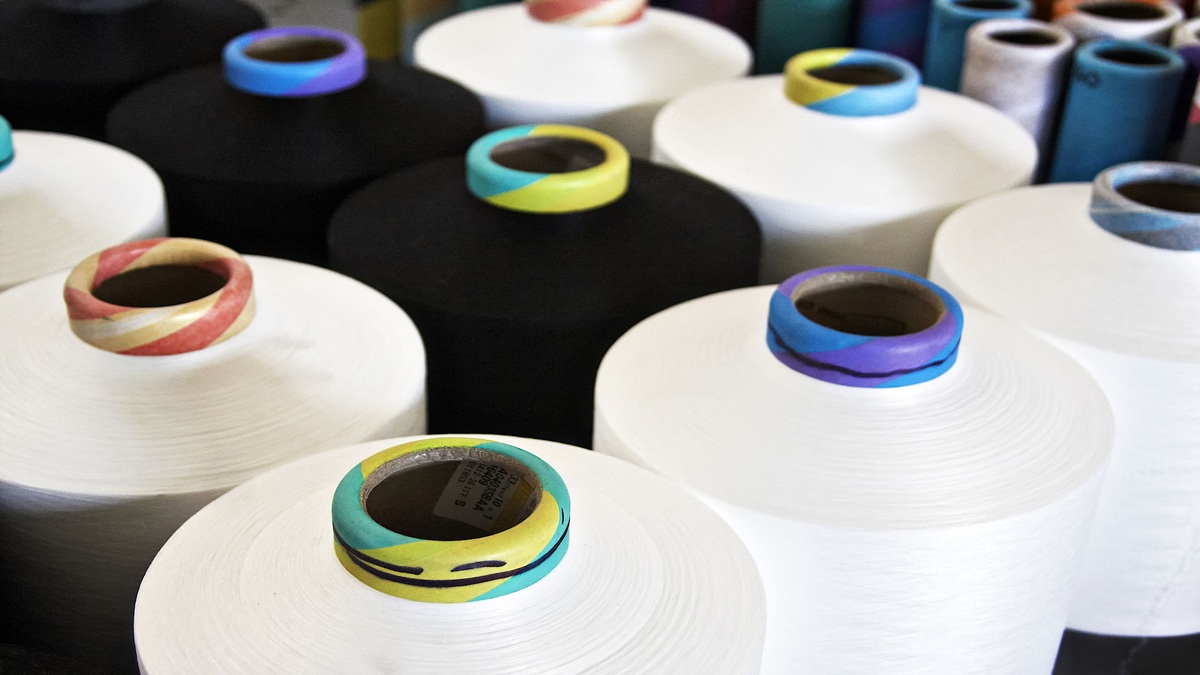South Korea is the world's sixth-largest machine tool producer and the world's fifth-largest machine tool consumer, with an average consumption of approximately US$4.33 billion. Among them, nearly 70% of the consumer market's demand is for products provided by local machine tool factories, and only close to 30% of the products must be imported from abroad.
The main importing countries of machine tools from South Korea are Japan, Germany, and China, while Taiwan is the No. 5 major importing countries. In the past six years, the models with higher import value are laser processing machines, cutting processing centers, metal pressure processing machines, and grinding finishing machines.
If Taiwan machine tool manufacturers plan to expand into the Korea machine tool market, can investigate the processing methods of South Korea's "automotive parts and components" manufacturing industry at first. To understand the machine tool specifications of machining accuracy, and reliability required by the Korea application industry, and the differences and complementary between Taiwan-made machine tool products and those made in South Korea, to find the market segment that South Korea can enter, and to continue to expand Taiwan's machine tool products into South Korea market.
Analysis of the world's fifth-largest machine tool consumer market
Analyzing the statistics of global consumption of machine tools from 2008 to 2017 shows that the average consumption of global machine tools in the past 9 years is about 86.413 billion US dollars. After the financial tsunami in 2009, the global consumption of machine tools has declined to 61.95 billion US dollars. When the global consumption of machine tools began to grow in 1994, it was the first time that the consumption amount experienced a serious decline. And after experiencing the strong recovery growth demand from 2010 to 2012 and the slowdown of global economic growth in 2016, the market demand for machine tool terminal applications has slowed down, resulting in a significant decline in global consumer demand for machine tools. The global consumption of machine tools only reached 79.76 billion US dollars. As of 2017, although it was mainly due to the slowdown in global economic growth, the machinery industry in China responded to the needs of an industrial structure optimization. There was an increasing trend in the demand for mid- and mid-to-high-end machine products and automated manufacturing units, as well as the economic recovery in the euro area. With the gradual increase in manufacturing capacity utilization rates and significant growth in demand for machine tools, the global consumption of machine tools has shown a growth relative to 2016. After nearly 9 years of growth and decline in the global machine tool consumer market. South Korea's machine tool consumption has always been ranked fifth or sixth in the world, with an average consumption of about 4.33 billion US dollars.
In 2017, South Korea was the sixth largest machine tool producer in the world, and nearly 70% of the demand in the Korea machine tool consumer market, that was provided by South Korea local machine tool manufacturers. The major of Korea machine tool manufacturing brands includes Doosan, Hyundai WIA, Hwacheon, SMEC, and DMC. Further analysis of the export value of Korea machine tools from 2015 to 2017 accounted for about 46.2% of the output value of Korea machine tools, and the proportion of export value in 2017 was higher than this average and reached 48.5%, showing that Korea machine tool products can be supplying domestic demand, it also exports and sells to the global low-end to mid-level machine tool market through preferential tariff agreements with countries around the world. South Korea was the seventh-largest exporter of machine tools in the world in 2017 and is the proportion of exports in the past three years has shown a growing trend year by year. In 2018, the main export countries of Korea machine tools were China, the United States, and Vietnam. The export value and proportion were US$511 million (17.7%), US$494 million (17.1%), and US$315 million (10.9%) respectively.
Meeting the needs of the Korea machine tool market In addition to Korea domestic products, machine tools and models that cannot be independently manufactured or assembled in Korea, but whose accuracy and reliability still cannot meet the end application market still need to rely on imports, and the import dependence of the Korea machine tool market has maintained an average of about 33%. The proportion of imports in the past three years has shown a trend in the increasing year by year. In 2017, the import dependence rate was 34.9%.
Further analysis of the Korea machine tool consumer market from 2010 to 2017 found that nearly 60% of the consumption amount was part of local production, including foreign manufacturers directly selling in Korea after setting up factories in Korea. Thirty-fourths of the total consumption value is imported. The main importing countries are Japan, Germany, and China. Comparing the proportion of Korea machine tool import consumption from 2010 to 2017, the country with a larger decline in the proportion of imports is Japan, whose proportions from 2010 to 2017 were 17.8% and 14.6%, respectively.
Comparing the proportion of Korea machine tool import consumption in 2010 and 2017, the largest increase in the proportion of imports was China and Switzerland, and the proportions of these two countries in 2010 and 2017 were 2.0% and 3.5% and 1.7% and 2.8, respectively %. As for the proportion of imports from Taiwan, there has been an increase being 1.6% to 2.4%, with the proportions from 2010 to 2017. However, observing the compound growth rate of the import value of South Korea's top six machine tool importing countries from 2015 to 2017, that Switzerland and Taiwan are the top two countries with the largest annual growth rate of South Korea machine tool import value from 2015 to 2017. The rates are 18.4% and 7.5% respectively, showing that the machine tool products of the two countries from 2015 to 2017 are close to the needs of the Korea domestic market.
Observe that South Korea’s import of machine tools in the first quarter of 2019 was US$308 million, a 17.7% decline from the same period last year. Taiwan is South Korea's fifth-largest importer, with an import value of US$12 million, accounting for 3.95% of South Korea's overall import value of machine tools, a 37.8% decline from the same period last year. South Korea's main imports of Taiwan's top three machine tools are integrated processing machines, forging, hammering and punching machine tools, and grinding and finishing machines. In the first quarter of 2019, South Korea's imports of Taiwan's comprehensive processing machines accounted for 54.8% of South Korea's total imports of Taiwan's machine tools, which was 6.67 million US dollars. In the first quarter of 2019, South Korea imported Taiwan’s forging, hammering, and press-punching machine tools and grinding and finishing machines and their imports were 1.33 and 1.17 million U.S. dollars, and they accounted for 11% and 9.6% of the total amount of machine tools imported from South Korea to Taiwan.
South Korea machine tool application market of the automotive industry
The machinery industry has always been the driving force of South Korea's economic development. The rapid development of the machinery and electronics industries has made South Korea several industries leading the world. For example, the South Korea shipbuilding industry ranks second in the world, steel production ranks eighth in the world, and automobile production ranks in the world with ninth. Also, South Korea’s economy has always been export-oriented, vigorously developing manufacturing, and supporting large-scale enterprises to dominate the production system. However, under the impact of the US economic downturn and the European debt crisis, problems with South Korea’s industrial structure have been exposed, causing domestic demand and the job market to slump. In recent years, the Korea government has promoted the "Industry 4.0" plan. Its primary and clear strategic goal is to promote the integration of manufacturing and information technology, thereby creating new industries and enhancing the competitiveness of Korea manufacturing.
Korea government formulated the "Manufacturing Innovation 3.0" strategy to enhance the competitiveness of the manufacturing industry, which includes several specific measures, such as the development of 13 emerging industries such as drones, smart cars, robots, smart wearable equipment, and smart medical care. It is expected that through the integration of emerging technologies such as information technology, software, and the Internet of Things, it is planned to complete 10,000 smart production plants by 2020, and replace 1/3 of the total number of factories with more than 20 employees in South Korea into smart factories, and it is expected to reach 2024. The annual export value of South Korea's manufacturing industry reached US$1 trillion, and the country's competitiveness has been promoted to the top 4 in the world, surpassing Japan, China, the United States, and Germany.
According to the survey, the automotive industry is the largest market for machine tool applications in South Korea. The sales amount in 2016 was US$1,457.7 million. It is estimated that it will increase to US$2,072.7 million in 2021. The compound growth rate from 2013 to 2021 is 2.7%. The second-largest application market is the motor/electronics industry. The sales amount in 2016 was 664.1 million U.S. dollars. It is expected to fall to the third largest in 2018. The aerospace/defense industry is the second largest. It is estimated that it will increase to 907.9 billion million US dollars in 2021. The compound growth rate from 2013 to 2021 was 2.3%. The third-largest application market is the aerospace/defense industry. In 2016, the sales amount was 661 million U.S. dollars, and it is estimated that it will increase to 925.6 million U.S. dollars in 2021. The compound growth rate from 2013 to 2021 is 2.5%. As well as other industries, such as the petroleum industry, the medical industry, etc., the sales amount in 2016 was 664 million U.S. dollars, and it is estimated that it will increase to 883 million U.S. dollars in 2021. The compound growth rate from 2013 to 2021 is 1.2%.
The proportion of the Korea machine tool application market, the amount used in the automotive industry in 2016 accounted for 42.3% of the total Korea machine tool application market, and it is estimated that the proportion will remain at 43.3% in 2021. Furthermore, the amount used in the aerospace/defense industry in 2016 accounted for 19.2% of the total Korea machine tool application market, and it is estimated that the proportion will increase to 19.3% in 2021. As for the amount applied to the motor/electronics industry in 2016, it accounted for 19.3% of the total Korea machine tool application market, and it is estimated that the proportion will decrease to 19.0% in 2021. In 2016, the amount applied to other industries accounted for 19.3% of the total Korea machine tool application market, and it is estimated that the proportion will decrease to 18.4% in 2021.
Further analyze the development of the automobile industry, the largest application market for Korea machine tools. South Korea’s auto sales in the past five years have shown a trend of alternating growth and decline, first experiencing growth in 2014 and 2015. However, in 2016, the global economy entered a new era of mediocrity, and the auto market was gradually saturated, resulting in a decline in car sales from 2016 to 2017, and slight growth in 2018. South Korean car sales in 2014 were 1.66 million units, an increase of 7.8% compared to 2013; in 2015, it grew by 10.4% to 1.833 million units; in 2016, it declined by 0.4% to 1.825 million units; in 2017, it continued to decline by 1.8% to 1.793 million In 2018, it increased slightly by 1.1% to 1.813 million vehicles.
Secondly, the automobile production volume in South Korea in the past five years has shown a trend of decline after growth. South Korea’s car production in 2014 was 4.525 million units, an increase of 0.1% compared to 2013. The growth rate continued to increase from 0.7% to 4.556 million units in 2015. The car production volume declined from 2016 to last year, and declined in 2016 7.2%, reaching 4.229 million vehicles. In 2017, it continued to decline by 2.7% to 4.115 million vehicles. In 2018, they declined again by 2.1%, reaching 4.029 million vehicles. In recent years, the South Korea automobile industry has been showing negative growth in production, domestic demand, and exports. The upstream and downstream industries have been severely impacted. At this stage, the Korea automobile industry is facing problems such as global trade friction caused by trade protectionism, the hegemonism of China, and the erosion of Korea's domestic demand by imported cars. The crisis in the Korea automobile industry may lead to South Korea’s economy has been shaken. In particular, the US government is considering imposing a 25% tariff on imported cars from the country. This has caused the South Korea government and the auto industry to face a major test, which may have a significant impact on the demand for the Korea machine tool market.
Fluctuations in import demand for Korea machine tools
The main imported machine types of Korea machine tools over the years include metal smelting and casting machines; metal rolling mills; laser processing machines; metal-cutting machining centers; lathes; drilling, boring, milling, and threading machine tools; grinding and finishing machines; planing and drawing, Slotting machines; forging, hammering, die-pressing machine tools and other non-metal processing machines, etc. The total import value from 2013 to 2018 was 9,964 million US dollars, and the average annual total import value was 1,661 million US dollars. In the past six years, the types of machines with high import demand are laser processing machines, cutting processing centers, metal pressure processing machines (such as forging, hammering, and punching machine tools), and grinding and finishing machines.
Laser processing machines ranked first in the total import value from 2013 to 2018. During this period, the total import value of this machine type was US$1,904 million, accounting for 19.1% of the total import value of machine tools in Korea. Including 2013 and 2017 it is the two years with the highest import value, and its import value is as high as 388 million US dollars and 380 million US dollars respectively. The average import value from 2013 to 2018 is 317 million US dollars. The second is the metal cutting center processing machine imports in 2018.
The total import value was US$1,639 million, accounting for 16.4% of the total import value. It showed a growth trend from 2013 to 2014. In 2014, the import value reached US$366 million, an increase of 42.9% over the previous year; however, it showed a year-on-year decline during 2015-2018. The average import value from 2013 to 2018 was 273 million US dollars.
The third place in the total import value is the metal pressure processing machine. The import value from 2013 to 2018 is relatively average. The total import value is 1,170 million US dollars, accounting for 13.2% of the total import value, and the average annual value is about 218 the amount is around millions of dollars. The fourth-ranked metal grinding and finishing machine, the import value of 2013-2018 showed growth and slowing down. The total import value of the six years was 1,904 million US dollars, accounting for 11.7% of the total import volume. The average value of 2013-2018, the import value is 194.9 million US dollars.
Observing the compound growth rate of Korea machine tool imports from 2013 to 2018, the growth rate of other non-cutting machine types such as metals, cermets, etc., has a CAGR of 6.54% for six years. Shows that this type of foreign machine tool production in the past six years is close to the Korea domestic market demand. From 2013 to 2018, part of the decline in the annual import value trend in descending order is that the CAGR of the metal rolling mill and its roll is -14.99%. The CAGR of the converter, ladle, ingot mold, and casting machine for metal smelting and foundry is -14.92 %. The CAGR of drilling, boring, milling, and threading machine tools is -10.46%. The CAGR of metal cutting planers, slotting machines, broaching machines, gear cutting machines, etc. is -7.79%. The CAGR of metal cutting center processing machines is -4.13%. The CAGR of laser processing machines is -2.74%. The CAGR of metal pressure processing machine tools is -2.62%. The CAGR of metal cutting lathes is -2.43%. The CAGR of metal grinding and finishing machines is -1.07%.
Analysis of the Korea machine tool consumer market in 2018
In 2018, the average unit price and quantity of machine tools imported by Korea from 56 countries in the world were analyzed, and the total import quantity in this market was 2,010,728 units and the total import value was 1,354,136,116 U.S. dollars. The average unit price of imports was 644 U.S. dollars per unit and 26,783. The dollar/unit is divided into three regions.
In market areas where the average unit price of imports exceeds US$26,783/unit, the import volume accounts for 0.1% of the total import volume, and the import value accounts for 13.6% of the total import value. The largest supplier of this regional market is Switzerland, with an average unit price of US$79,315 per unit. The number of products supplied accounted for 50.5% and 0.1% of the total imports in the region and South Korea, respectively. As for the number of products supplied, they accounted for 59.3% and 8.0% of the total import value of the region and South Korea, respectively. Secondly, the second largest supplier of this regional market in Thailand, with an average unit price of US$45,482 per unit. The number of products supplied accounted for 31.6% and 0.04% of the total imports in the region and South Korea, respectively. As for the number of products supplied, they accounted for 21.3% and 2.9% of the total import value of the region and South Korea, respectively. Besides, the top five suppliers in the region include Singapore, Turkey, and Australia.
In the market area where the average unit price of imports is US$644/unit and US$26,783/unit, its import volume accounts for 5.9% of the total import volume, and the import value accounts for 67.9% of the total import value. The main supplier of this regional market is Japan, and the average unit price of its products is US$6,728 per unit. The number of its products accounted for 74.7% and 4.4% of the total imported products in the region and South Korea, respectively. As for the number of products supplied, they accounted for 65.0% and 44.1% of the total import value of the region and South Korea, respectively. The second is Germany, with an average unit price of US$23,350/unit, and the number of products it supplies only accounts for 6.5% and 0.4% of the total imports of this product in the region and South Korea. As for the number of products supplied, they accounted for 19.7% and 13.4% of the total import value of the region and South Korea, respectively. The top 5 suppliers in the region include Taiwan, Italy, and Austria.
As for the market areas where the average price of imports is less than 644 US dollars/unit of Taiwan, their imports accounted for 93.9% of the total imports, and the import value accounted for 18.5% of the total import value. The main supplier country of this regional market is China, and the average unit price of its products is US$124 per unit.
The region's number of products accounted for 77.8% and 73.1% of the total imports of the products in South Korea. As for the number of products supplied, they accounted for 72.7% and 13.4% of the total import value of the region and South Korea, respectively. The top five suppliers in the region include the United States, Vietnam, the United Kingdom, and Mexico. The average unit price of Taiwanese products is US$4,560/unit, which lies in the market area where the average unit price of imports is US$644/unit and US$26,783/unit. The quantity of supplied products accounted for 15.0% and 0.9% of the total imports of the products in the region and South Korea. As for the number of products supplied, they accounted for a total of 8.8% and 6.0% of the import value.
Locked in the manufacturing of automotive parts and components to layout the Korea machine tool market
South Korea’s economy has always been export-oriented in the past, vigorously developing the manufacturing industry, and fostering large-scale enterprises to dominate the production system. Among them, the machinery industry has always been the driving force behind South Korea’s economic development, and the rapid development of the machinery and electronics industries has made South Korea have leading multiple industries in the world. For example, South Korea’s shipbuilding industry ranks second in the world. Steel production ranks eighth in the world. Automobile production ranks ninth in the world. Global auto parts production ranks fifth, only behind to China, Japan, the United States, and Germany.
However, in recent years, the Korea automobile industry has faced problems such as global trade frictions caused by trade protectionism, the hegemonism of China, and the erosion of Korea's domestic demand by imported cars. Even the US government has considered imposing 25% tariffs on imported cars from the country, resulting in the Korean government And the auto industry is facing a major test. The largest application market for Korea machine tools is the automotive industry. According to survey data, the number of auto parts manufactured by machine tools in 2016 was US$1,457.7 million. Accounting for 42.3% of the total machine tool application market in Korea, while 2016-2018 The production volume of the Korea auto industry is showing a decline, and this situation may impact the Korea machine tool market demand.
South Korea is the sixth-largest producer of machine tools in the world, and nearly 70% of the demand in the Korea machine tool consumer market is for products provided by local machine tool factories, and only close to 30% of the products must be imported from abroad. The main importing countries are Japan, Germany, and China, while Taiwan is the fifth largest importer of Korea machine tools. In the past six years, the models with high import value have been locked in the layout of automobile parts manufacturing. The Korea machine tool market is laser processing machines, cutting machining centers, metal pressure processing machines (such as forging, hammering, die press machine tools), and grinding machines finishing machines. As far as the machine tool industry is concerned, South Korea and Taiwan are in a situation of competing with each other in the complete machine part. However, in the transmission components part, the Technology of Taiwan has reached a certain world level, such as linear slides and ball guide screws. Many machine tool companies in South Korea use Taiwan-made machine tool components.
Looking at the main types of machines imported from South Korea from Taiwan are "forging, hammering, and punching machine tools", "metal cutting machining centers, single-station, and multi-station combined machine tools" and "grinding finishing machines". The machine tool application market is the "automotive component" manufacturing industry. Therefore, when Taiwanese machine tool manufacturers plan to expand the Korea machine tool market, they can first investigate the processing methods of the country’s "automotive component" manufacturing industry to understand South Korea’s machine tool specifications, machining accuracy, and reliability required by the application industry, as well as the differences and complementary between Taiwan-made machine tool products and those made in South Korea, are used to identify market segments that South Korea can enter and find suitable ones in South Korea Agents or distributors cooperate to assist Taiwanese machine tool manufacturers to deal with simple after-sales maintenance service issues that customers need. Taiwan’s machine tool manufacturers should not only continue to improve their machine assembly manufacturing technology but also strengthen cooperation with the Korea machine tool terminal application market customers, to closely meet the needs of South Korea manufacturing. To continue to expand Taiwan’s machine tool products into Korea market.







.jpg)
.jpg)





